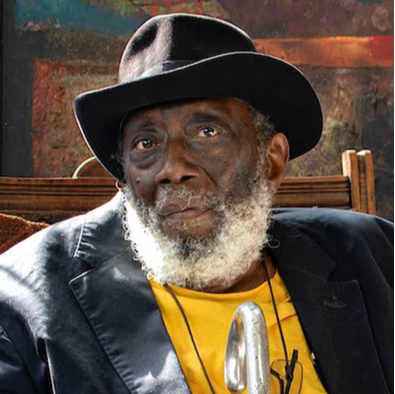
Frank Bowling
Frank Bowling is celebrated as one of the finest British artists of his generation.
Biography of Frank Bowling
Frank Bowling was born in British Guiana in 1934. His artistic journey began when he arrived in London in 1953, eventually graduating from the Royal College of Art with a silver medal for painting in 1962. In the early 1960s, he emerged as a distinctive force in London's art scene, showcasing an art style that seamlessly blended figurative, symbolic, and abstract elements.
As a contributing editor at Arts Magazine from 1969 to 1972, Bowling played a crucial role in intellectual debates on 'black art.' He rejected the notion that artists of color should exclusively create political or protest art, staunchly defending those engaged in abstraction. In 1969, he curated the influential exhibition '5+1' at the State University of New York, Stony Brook, and Princeton University, showcasing works by five African-American abstract artists alongside his own.
Bowling's solo exhibition at the Whitney Museum of American Art in 1971 featured six large "Map Paintings." From 1973 to 1978, he explored chance and "controlled accidents" in his "Poured Paintings," pouring paint from a two-meter height to create visually arresting compositions.
In recognition of his contributions, Bowling became a Royal Academician in 2005, received the OBE for services to Art in 2008, and was knighted in the Queen's Birthday Honours in 2020. His work is part of fifty collections globally, featured in numerous group and solo exhibitions, including the retrospective at Tate Britain in 2019.
Frank Bowling's Art Style
Relocating to New York in 1966, Bowling's commitment to modernism propelled him to focus on material, process, and color. By 1971, he had transitioned from figurative imagery to pure abstraction, exemplified by his iconic "Map Paintings" (1967-71). These works, featuring stenciled landmasses of continents, marked a significant evolution in Bowling's artistic expression.
Returning to London in 1975 but maintaining connections to New York, Bowling's work in the 1980s introduced sculptural paintings with embedded objects and textured canvases, evoking landscapes and geological strata. Influenced by both the English landscape tradition and American abstraction, Bowling's experimentation with materials like ammonia, gel, metallic, and pearlescent paint produced mesmerizing effects on canvas.
Years:
Born in 1934
Country:
Guyana, Bartica
Gallery: